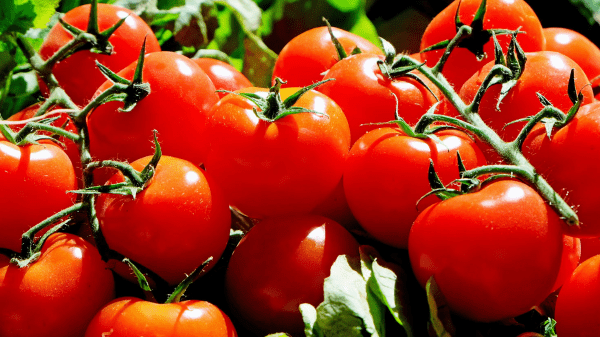You can tell the year you’re in by the catchwords that are being thrown around.
One example from this year is reshoring.
It’s the opposite of offshoring. It’s about bringing industries that had moved abroad back to the U.S.
A new federal program is evaluating “the U.S. defense and public health industrial bases, information technology, transportation, and supply chains for food and agriculture” for possible reshoring, according to Thomas Industry Reports.
Yet for many fruits and vegetables, offshoring continues to advance, with little possibility for reversal. A recent article in UC-Davis’s Rural Migration news does not exactly tell us anything new, but it does encapsulate the situation in Florida.
“Florida has been losing market share to Mexican imports in bell peppers, blueberries, tomatoes, and strawberries,” says the article. “For example, Florida in 2000 provided 46 percent of the bell peppers consumed in the US between November and June; by 2020, the Florida share of a larger bell pepper market was 12 percent.”

For open-field round tomatoes, Florida’s share of the market fell from 63 percent to 30 percent between 2000 and 2020.
By contrast, “this year Mexico is expected to export 1.8m tonnes of tomatoes to its northern neighbour, a record,” reports The Economist. “Last year exports of tomatoes alone were worth around $2.3bn”.
As for strawberries, “the volume of strawberries consumed between November and March more than doubled between 2000 and 2020, with most of the increase due to imports from Mexico as production shrank in both Southern California and Florida,” the article in Rural Migration News adds.
As usual, the causes for this trend are complex: the development of varieties (such as for blueberries) that can be grown in a hotter climate; high labor costs in the U.S.; urbanization pressures in both Florida and California; and increased consumer desire for all-season access to fresh produce.
“Florida growers complain that Mexican exporters have lower production costs so that, despite higher shipping costs, their commodities are cheaper in US markets,” says the Rural Migration News, echoing a widely stated claim.
One little detail: from a trade standpoint, competitive advantage does not necessarily indicate unfair trade practices, which include “government subsidies in home countries” or dumping at low prices in the U.S. market.
By these terms, the fact that labor is cheaper in Mexico is not an unfair advantage, nor would it be unless the Mexican government could be proved to be underwriting farmworkers’ wages.
Of course, the ambiguities here offer rich soil for lawsuits.
Offshoring produce is not quite the same as it is in manufacturing. An American auto maker can set up a factory in Monterrey, Mexico, that can completely supplant an equivalent in the U.S. But certain instabilities for fruits and vegetables—seasonal availabilities, off-year production, weather disasters, drought—make it harder for foreign production to completely supplant domestic equivalents.
Nevertheless, the trends are pointing overseas. Another example: asparagus. “U.S. acreage is currently only about one-third of what it was 15 years ago due to increased imports from Central and South America”.
“In 2019, total asparagus production was 74.37 million pounds. Approximately 502.4 million pounds of fresh asparagus was imported in 2017, mostly from Mexico, Peru and Chile.”
In short, as the U.S. is attempting to reshore key industries, trends appear to be pointing in the opposite direction for fresh fruits and vegetables.
It would be unkind to end this article without a silver lining, so let me mention a counterexample. Since 2013, “Mexican marijuana has largely been supplanted by domestic-produced marijuana,” according to the Drug Enforcement Administration.



